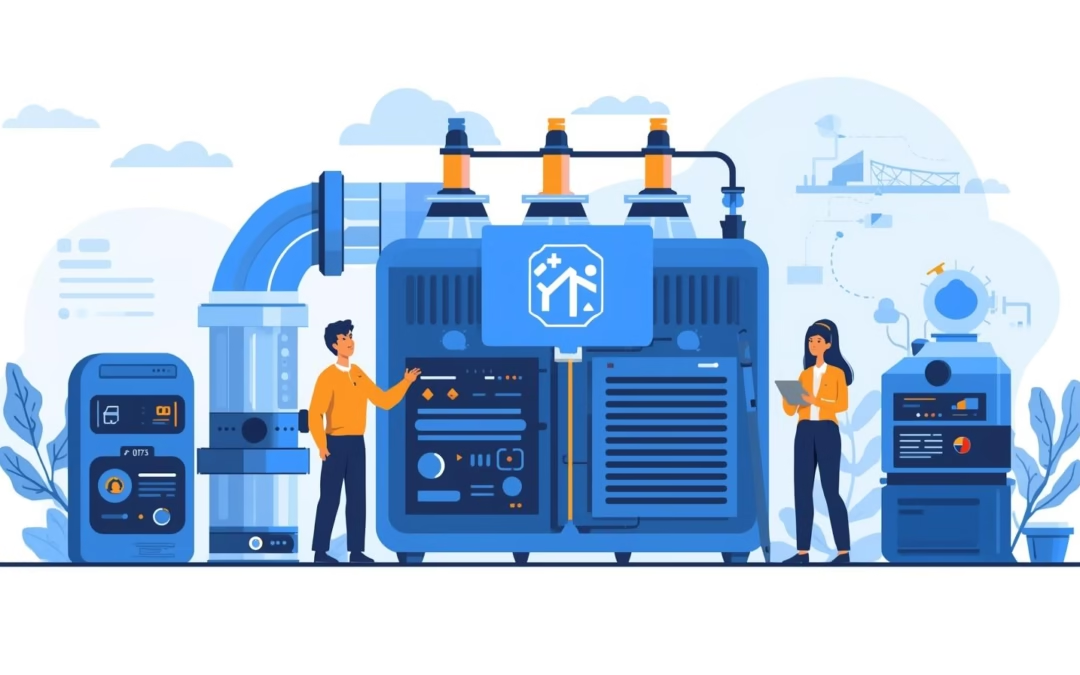As a hiring manager in the energy sector, you’re at the forefront of one of the world’s greatest challenges: decarbonization. You’ve assembled a brilliant team of geologists, chemical engineers, and project managers to build out your Carbon Capture, Utilization, and Storage (CCUS) facility.
Yet, as you move from pilot to full-scale operation, a critical gap appears. Your facility is a marvel of industrial engineering, but it’s generating a torrent of data from sensors, chemical processes, and injection wells. Without the right expertise to translate this data into action, that potential is just noise.
Here’s the challenging truth for the CCUS industry: The viability and profitability of carbon capture at scale will depend as much on code as it does on chemistry.
You’ve built a world-class industrial plant, but you’re leaving its full potential untapped. To truly optimize and scale your operations, you need to hire for the “Missing Code.”
The Data Dilemma: Beyond the Hard Hats and Pipelines
A modern CCUS facility is a high-tech data factory.
- The efficiency of amine scrubbing or other capture processes isn’t static; it fluctuates with temperature, pressure, and gas composition. This requires real-time process modeling to optimize.
- Ensuring the long-term, safe storage of CO₂ underground isn’t just a geological survey; it’s an ongoing seismic data analysis and reservoir simulation problem.
- Transporting CO₂ via pipeline requires a sophisticated sensor network and predictive maintenance software to ensure safety and efficiency, preventing costly downtime.
Without a robust software and data analytics layer, you’re flying partially blind. You’re reacting to problems instead of predicting them and missing crucial opportunities to reduce operational costs—a key factor in making carbon capture economically viable.
The “Missing Code” Roles Your CCUS Project Needs Now
Searching for a generic “Software Developer” won’t work. You need specialists who can operate at the unique intersection of heavy industry and high tech.
1. The Carbon Capture Data Scientist
This is your data interpreter. This professional doesn’t just analyze spreadsheets; they build predictive models. They use machine learning algorithms and Python libraries (like Pandas and Scikit-learn) to analyze real-time process data, identifying minute adjustments that can lead to significant gains in capture efficiency and reductions in energy consumption. They answer the question: “How can we capture more CO₂ for less money?” They often have a background in chemical engineering or physics, complemented by strong data science skills.
2. The CCUS Process & Automation Engineer
This is the role that translates data insights into real-world action. This engineer is a hybrid of a traditional process control expert and a modern automation specialist. They work with PLCs (Programmable Logic Controllers) and SCADA systems, but also write scripts and implement software to automate the physical machinery of the plant. They ensure that when the data scientist’s model suggests an adjustment, the plant’s valves, compressors, and pumps respond instantly and reliably. This role is absolutely critical for reducing manual oversight and maximizing operational uptime.
Fishing in the Right Ponds: Where Energy and Tech Collide
This unique talent doesn’t grow on trees. You need to look in cities where the worlds of energy and technology have been forced to merge.
- Calgary, Alberta: This is ground zero. Calgary is the undisputed center of Canada’s energy industry and is rapidly reinventing itself as a cleantech hub. The city has a deep pool of engineers who understand the industrial side and a fast-growing tech scene. It’s the most fertile ground for finding these hybrid engineering and tech roles.
- Vancouver, British Columbia: While not a traditional energy hub, Vancouver has a world-class software development scene and a powerful mission-driven ethos. It’s an excellent place to find top-tier software talent who are passionate about applying their skills to solve climate change and can be integrated into your CCUS projects.
The Pitch: How to Lure a Senior Developer to a Decarbonization Project
So, how do you compete with a trendy SaaS company or a big tech firm? You sell the mission.
Top tech talent is actively seeking impact. They don’t just want to optimize ad clicks; they want to solve meaningful problems.
- Frame the challenge: Position the role not as “maintaining a control system,” but as “building the software that makes decarbonization a global reality.” 🌍
- Highlight the complexity: Smart engineers are drawn to hard problems. Emphasize the unique challenge of blending machine learning with industrial chemistry and geology.
- Sell the impact: A 1% efficiency gain, driven by their code, could mean thousands of tons of CO₂ captured. That’s a tangible, world-changing legacy.
Build Your Complete Carbon Capture Team
Finding a developer who understands both Python and pipeline pressure is a niche challenge that requires a specialist’s eye. Your internal HR team is busy, and generic recruiters don’t speak this hybrid language.
At Axe Recruiting, we thrive at the intersection of industry and technology. We have the network and the expertise to find the technical talent that will optimize your operations and secure your project’s future.
Don’t let a skills gap slow down your mission. Contact Axe Recruiting today for a strategic consultation.
